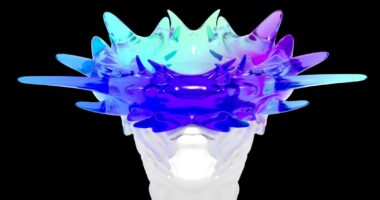The Initial Hype: Exploring the Rise of NFTs
Non-fungible tokens (NFTs) emerged as a significant phenomenon in the digital realm in recent years. NFTs are unique digital assets stored on blockchain technology, ensuring their singularity and non-interchangeability. Several factors contributed to the initial excitement surrounding NFTs.
The concept of digital ownership appealed to a new generation of art collectors and enthusiasts seeking investment opportunities in digital assets. This interest sparked excitement and curiosity, leading to increased NFT sales and auctions. The growing popularity of cryptocurrencies and blockchain technology also played a role in the rise of NFTs.
As public understanding of blockchain and its potential applications increased, the idea of owning unique digital assets on a blockchain became more attractive. The decentralized nature of blockchain technology provided a sense of security and transparency, further fueling interest in NFTs. Endorsements from celebrities and influential figures in the art and entertainment industries helped legitimize and popularize NFTs, resulting in widespread media coverage and public interest.
The combination of digital ownership appeal, blockchain technology advancements, and celebrity endorsements contributed to the initial hype surrounding NFTs.
NFT Artists: How Digital Creatives Found Success in the NFT Market
Empowering Artists with Direct-to-Consumer Sales
This direct-to-consumer approach has empowered artists to bypass traditional gatekeepers such as galleries or art dealers, allowing them to retain more control over their work and earn higher profits from their sales. Furthermore, NFT artists have also benefited from the global reach and accessibility of the NFT market, connecting with a global audience of collectors and buyers without being limited by geographical boundaries.
Global Recognition and Authenticity
This has enabled emerging artists to gain exposure and recognition on an international scale, leading to increased demand for their digital artwork. The transparent and immutable nature of blockchain technology has provided a level of authenticity and provenance for NFT artwork, instilling confidence in collectors and investors.
Success in the NFT Market
As a result, NFT artists have found success by embracing the opportunities presented by the NFT market and leveraging blockchain technology to showcase and monetize their digital creations. By tokenizing their artwork as NFTs, artists can establish ownership rights and create scarcity for their digital creations, which can then be sold through online marketplaces or auction platforms.
NFT Jobs: The Emergence of New Career Opportunities in the NFT Industry

The rapid growth of the NFT market has led to the emergence of new career opportunities within the NFT industry. As the demand for digital artists, blockchain developers, and marketing specialists continues to rise, job openings in these fields have become increasingly prevalent. Digital artists who specialize in creating NFT artwork have found new avenues for employment and income generation, as they are sought after by collectors and platforms looking to commission or showcase unique digital creations.
Additionally, blockchain developers with expertise in smart contracts and decentralized applications have become essential for building and maintaining NFT marketplaces and platforms. Moreover, marketing specialists with knowledge of digital asset promotion and community engagement have also found opportunities within the NFT industry. As more brands and creators look to enter the NFT market, there is a growing need for marketing professionals who can help promote and sell NFT collections to a wider audience.
Furthermore, legal experts specializing in intellectual property rights and blockchain law have also seen an increase in demand for their services within the NFT industry. As the regulatory landscape surrounding NFTs continues to evolve, legal professionals play a crucial role in ensuring compliance and protecting the rights of creators and collectors. Overall, the emergence of new career opportunities within the NFT industry reflects the growing impact and potential for growth within this dynamic sector.
NFT Jobs: The Emergence of New Career Opportunities in the NFT Industry The rapid growth of the NFT market has led to the emergence of new career opportunities within the NFT industry. As the demand for digital artists, blockchain developers, and marketing specialists continues to rise, job openings in these fields have become increasingly prevalent. Digital artists who specialize in creating NFT artwork have found new avenues for employment and income generation, as they are sought after by collectors and platforms looking to commission or showcase unique digital creations.
Additionally, blockchain developers with expertise in smart contracts and decentralized applications have become essential for building and maintaining NFT marketplaces and platforms. Moreover, marketing specialists with knowledge of digital asset promotion and community engagement have also found opportunities within the NFT industry. As more brands and creators look to enter the NFT market, there is a growing need for marketing professionals who can help promote and sell NFT collections to a wider audience.
Furthermore, legal experts specializing in intellectual property rights and blockchain law have also seen an increase in demand for their services within the NFT industry. As the regulatory landscape surrounding NFTs continues to evolve, legal professionals play a crucial role in ensuring compliance and protecting the rights of creators and collectors. Overall, the emergence of new career opportunities within the NFT industry reflects the growing impact and potential for growth within this dynamic sector.
The NFT Boom: Understanding the Factors that Contributed to the Rapid Growth of NFTs
| Factors | Contributions |
|---|---|
| Crypto Technology | Enabled secure and transparent transactions |
| Digital Art Market | Provided a platform for artists to showcase and sell their work |
| Cultural Shift | Increased interest in digital ownership and collectibles |
| Celebrity Endorsement | Boosted visibility and credibility of NFTs |
| Investor Speculation | Created a market frenzy and drove up prices |
The rapid growth of NFTs can be attributed to several key factors that have contributed to their widespread adoption and popularity. Firstly, advancements in blockchain technology have played a significant role in enabling the creation and trading of non-fungible tokens. The use of blockchain provides a secure and transparent platform for storing and transferring digital assets, which has instilled confidence in collectors and investors looking to participate in the NFT market.
Additionally, the rise of cryptocurrency adoption has facilitated transactions within the NFT ecosystem, making it easier for buyers to acquire digital assets using cryptocurrencies such as Ethereum. Furthermore, the growing interest from mainstream media outlets and influential figures has helped propel the popularity of NFTs into the mainstream consciousness. High-profile sales of NFT artwork by renowned artists have garnered widespread attention, leading to increased curiosity and investment in this emerging asset class.
Moreover, social media platforms have played a pivotal role in driving awareness and engagement within the NFT community, as creators and collectors use these channels to promote their work and connect with like-minded individuals. The convergence of these factors has contributed to the rapid growth of NFTs, positioning them as a disruptive force within the digital art market. The rapid growth of NFTs can be attributed to several key factors that have contributed to their widespread adoption and popularity.
Firstly, advancements in blockchain technology have played a significant role in enabling the creation and trading of non-fungible tokens. The use of blockchain provides a secure and transparent platform for storing and transferring digital assets, which has instilled confidence in collectors and investors looking to participate in the NFT market. Additionally, the rise of cryptocurrency adoption has facilitated transactions within the NFT ecosystem, making it easier for buyers to acquire digital assets using cryptocurrencies such as Ethereum.
Furthermore, the growing interest from mainstream media outlets and influential figures has helped propel the popularity of NFTs into the mainstream consciousness. High-profile sales of NFT artwork by renowned artists have garnered widespread attention, leading to increased curiosity and investment in this emerging asset class. Moreover, social media platforms have played a pivotal role in driving awareness and engagement within the NFT community, as creators and collectors use these channels to promote their work and connect with like-minded individuals.
The convergence of these factors has contributed to the rapid growth of NFTs, positioning them as a disruptive force within the digital art market.
NFT News: Tracking the Latest Developments and Trends in the NFT Market
As interest in non-fungible tokens continues to grow, staying informed about the latest developments and trends in the NFT market is essential for creators, collectors, investors, and enthusiasts alike. One notable trend is the expansion of use cases for NFTs beyond digital art into areas such as gaming, virtual real estate, music royalties, and even real-world assets such as luxury goods or real estate properties. This diversification highlights the versatility of non-fungible tokens as a means of representing ownership or provenance across various industries.
Another significant development is the increasing focus on sustainability within the NFT space. With concerns about energy consumption associated with blockchain technology, there is a growing emphasis on exploring eco-friendly alternatives such as proof-of-stake blockchains or carbon offset initiatives for NFT transactions. Additionally, regulatory developments continue to shape the landscape for NFTs as governments around the world seek to establish guidelines for taxation, copyright protection, and consumer rights related to digital assets.
Staying informed about these developments is crucial for navigating the evolving landscape of non-fungible tokens effectively. As interest in non-fungible tokens continues to grow, staying informed about the latest developments and trends in the NFT market is essential for creators, collectors, investors, and enthusiasts alike. One notable trend is the expansion of use cases for NFTs beyond digital art into areas such as gaming, virtual real estate, music royalties, and even real-world assets such as luxury goods or real estate properties.
This diversification highlights the versatility of non-fungible tokens as a means of representing ownership or provenance across various industries. Another significant development is the increasing focus on sustainability within the NFT space. With concerns about energy consumption associated with blockchain technology, there is a growing emphasis on exploring eco-friendly alternatives such as proof-of-stake blockchains or carbon offset initiatives for NFT transactions.
Additionally, regulatory developments continue to shape the landscape for NFTs as governments around the world seek to establish guidelines for taxation, copyright protection, and consumer rights related to digital assets. Staying informed about these developments is crucial for navigating the evolving landscape of non-fungible tokens effectively.
The Fall of NFTs: Analyzing Factors that Led to Decline in Popularity

Oversaturation in the Market
Non-fungible tokens experienced a decline in popularity due to several contributing factors. One significant factor was oversaturation within the market, which occurred when an influx of new projects led to an overwhelming amount of supply without matching demand. This oversaturation resulted in decreased attention from collectors, who were inundated with options without clear differentiators between offerings.
Environmental Concerns and Ethical Considerations
Another factor contributing to this decline was concerns over environmental impact stemming from energy-intensive blockchain networks used for minting and trading NFTs. This raised ethical considerations among creators and buyers alike regarding their participation in an industry that potentially contributes to carbon emissions.
Trust Issues and Authenticity Concerns
High-profile instances of copyright infringement or plagiarism within certain NFT projects eroded trust within the community as concerns over authenticity grew. These factors collectively contributed to a decline in popularity for non-fungible tokens as attention shifted away from this space towards other emerging trends within cryptocurrency markets.
If you’re interested in learning more about the world of NFTs and their impact on the job market, check out this article on NFT-Jobs. It provides valuable insights into the growing demand for NFT-related skills and the opportunities available in this emerging industry.
FAQs
What is NFT?
NFT stands for non-fungible token, which is a digital asset that represents ownership or proof of authenticity of a unique item or piece of content, such as artwork, music, videos, or collectibles, using blockchain technology.
What happened to NFT?
As of [current date], NFTs continue to be a popular and evolving trend in the digital art and collectibles space. The market for NFTs has seen fluctuations in terms of sales volume and interest, but NFTs are still being actively traded and created by artists and creators.
Are NFTs still being bought and sold?
Yes, NFTs are still being bought and sold on various NFT marketplaces and platforms. While the hype around NFTs may have fluctuated, there is still a market for digital collectibles and unique digital assets.
Have there been any significant developments in the NFT space?
The NFT space continues to see developments such as new platforms, collaborations between artists and brands, and innovative use cases for NFTs beyond art and collectibles. Additionally, there have been discussions and debates around the environmental impact of NFTs and efforts to address sustainability concerns.
Is it still possible to create and mint NFTs?
Yes, it is still possible for artists and creators to create and mint NFTs using various NFT platforms and marketplaces. The process of minting NFTs involves uploading digital content to a blockchain and creating a unique token to represent ownership or authenticity.





